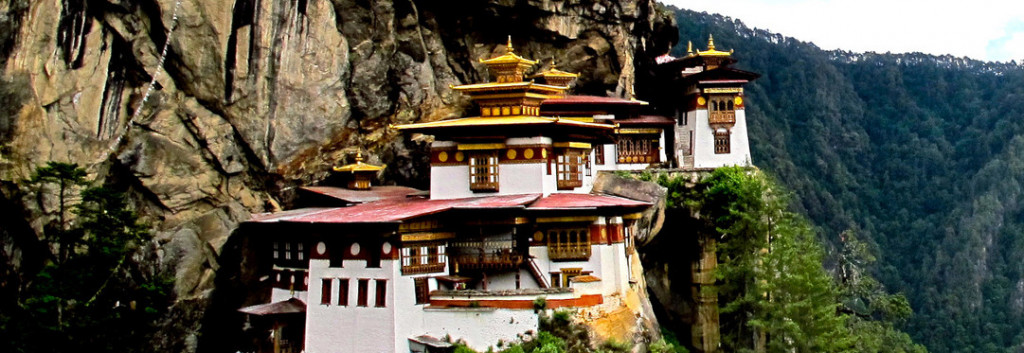
There is much to love about Bhutan, but it's the sacred side of the country that I enjoy the most. I love joining pilgrims as they look for the footprints of saints in a rockface, or explain monastery history in terms of flying tigers and unruly demons. On one hike alone, a reincarnated lama blessed me with a thangka made from the nose blood of a saint and then hit me on the back with the stone footprints of a divine skywalker. From Gross National Happiness to crazy wisdom, a journey to Bhutan is a journey into a different reality.
So why spend your money to come here? Firstly, there is the amazing Himalayan landscape, where snow-capped peaks rise above shadowy gorges cloaked in primeval forests. Taking up prime positions in this picture-book landscape are the majestic fortress-like dzongs and monasteries. This unique architecture sets the stage for spectacular tsechus (dance festivals) attended by an almost medieval-looking audience. Then there are the textiles and handicrafts, outrageous archery competitions, high-altitude trekking trails, and stunning flora and fauna. If it's not 'Shangri La', it's as close as it gets.
The Bhutanese pride themselves on a sustainable approach to tourism in line with the philosophy of Gross National Happiness. Foreign visitors famously pay a minimum tariff of US$250 per day, making it seem one of the world's more expensive destinations. However, this fee is all-inclusive – accommodation, food, transport and an official guide are all provided, so it's not a bad deal. You don't have to travel in a large group and you can arrange your own itinerary. What you won't find is budget backpacker-style travel.
Bhutan holds many surprises. This is a country where the rice is red and where chillies aren't just a seasoning but the main dish. It's also a deeply Buddhist land, where monks check their smartphones after performing a divination, and where giant protective penises are painted beside the entrance to many houses. Yet while it visibly protects its Buddhist traditions, Bhutan is not a museum. You will find the Bhutanese well educated, fun loving and well informed about the world around them. It's this blending of the ancient and modern that makes Bhutan endlessly fascinating.
Environmental protection goes hand in hand with cultural preservation in Bhutan. By law, at least 60% of the country must remain forested for all future generations; it currently stands above 70%. Not only is Bhutan carbon neutral, but it actually absorbs more carbon than it emits! For the visitor, this translates into lovely forest hikes and superb birding across a chain of national parks. Whether you are spotting takins or blue poppies, trekking beneath 7000m peaks or strolling across hillsides ablaze with spring rhododendron blooms, Bhutan offers one of the last pristine pockets in the entire Himalaya.